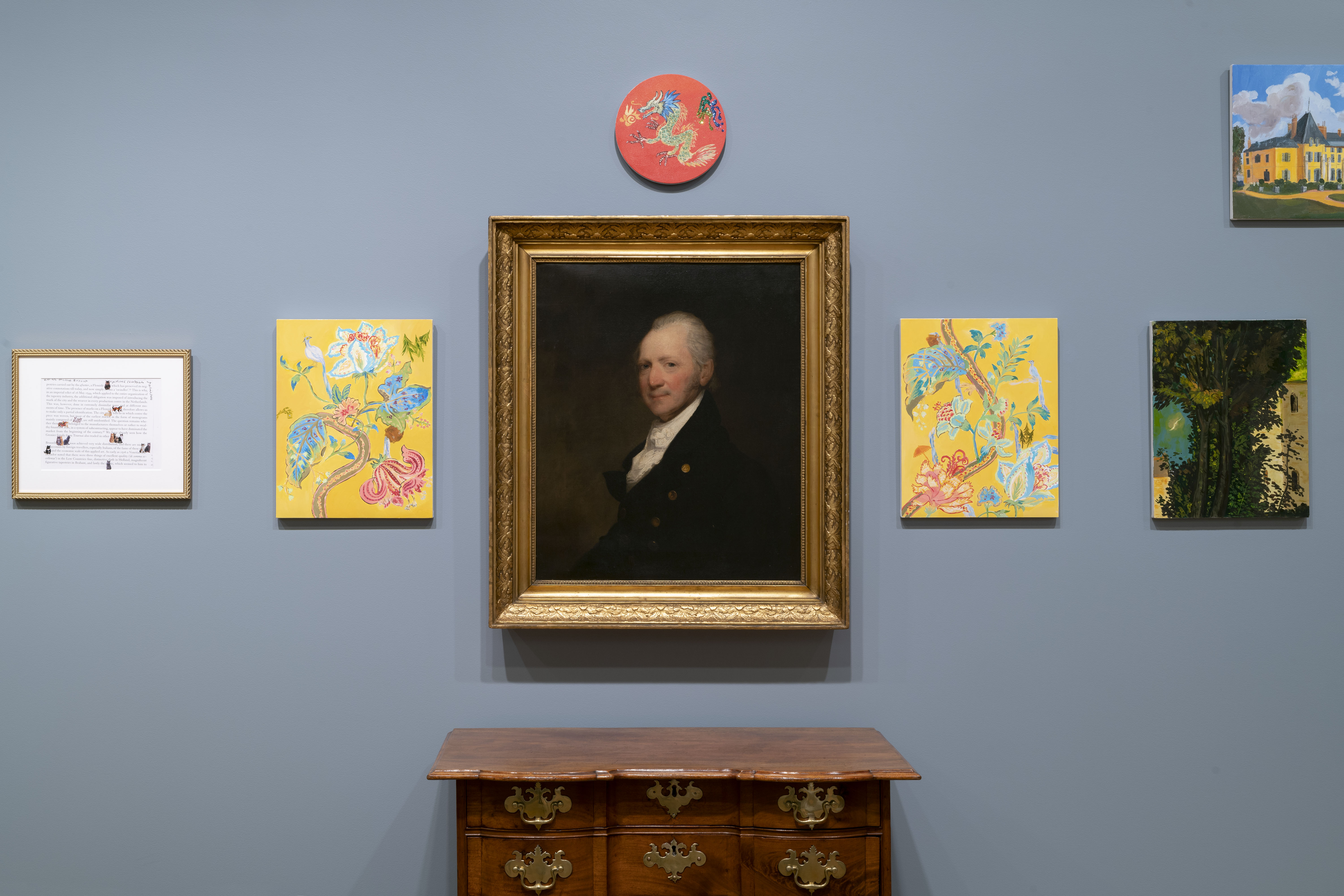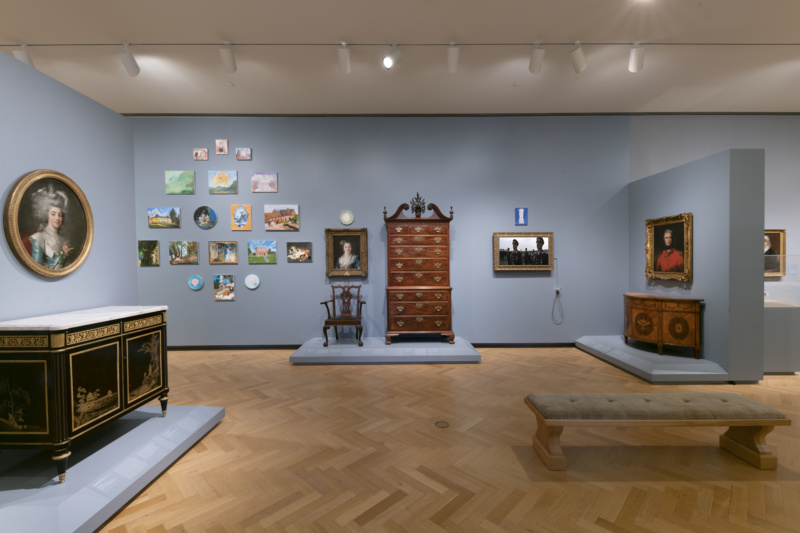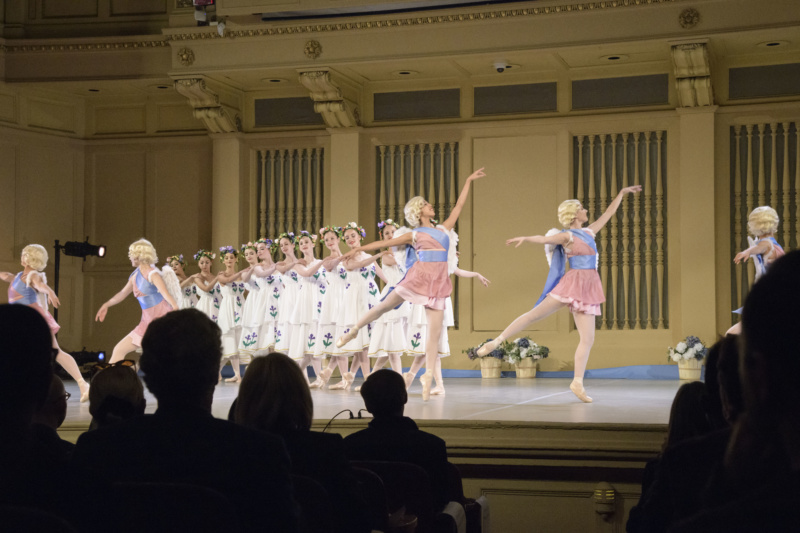
Karen Kilimnik’s contribution to the 57th Carnegie International is tucked into what feels like the museum’s least visited quarter: the decorative arts. Stacked away with the chairs, mirrors and the wonderfully functional pieces that tell the stories of their time, Kilimnik’s work seems quite at home in Andrew Carnegie’s behemoth. Like the ornate and exquisite objects, her seemingly lackadaisical paintings of lavish interiors and romantic folly combine the inviting domestic ideal with a biting prescience.

I’ve found myself drawn to Kilimnik’s work since our first acquaintance, a painting titled Swiss Boarding School (avalanche), 1995. Our bond sealed in 2016 when she wrote me a valentine in the form of her eponymous show at 303 Gallery: a suite of her glitter paintings and photo collages primarily featuring sybarite cats living their best selves through the glamor and excess of yesteryear and its fantasies. The exhibition felt in step with the ever-growing rumblings of Donald Trump’s cartoonish run for office. Here was the pleasing image of gluttony and its relationship with power, meme-ified for my digestion and entertainment.

Contextualized as a salon-style wall at Carnegie Museum, Kilimnik’s humor-filled remakes of classical scenes and Hollywood romances become fodder for looking at the way the decorative arts have quite literally dressed up the same structures that contemporary art claims to criticize including fascism, wage inequality, racism and violence. Carnegie serves a pinnacle example. The steel magnate pledged millions to the arts and education, yet at the same time profiteered under Henry Ford Frick’s harsh labor practices overseeing Carnegie Steel which led to 1982’s deadly Homestead strike. Of course, Frick and Carnegie fell out eventually, with Frick famously writing to amends-seeking Carnegie on his deathbed: “See you in Hell.” Frick died four months after, but in life the two held a luxury arms race inspired by the 18th century. Kilimnik’s images of Louis XIV-like luxury echo the perverse eclipse of wealth and our collective vision of the sublime with mouthy titles like: “zzzz-huh? what, me asleep? no I wasn’t!” (2016), which features a cat sat upon a canopy bed as a school of sticker fishies swim by. No one is maimed. The violence is only implied.

The same goes for Kilimnik’s new film, The World at War, which on opening day was screened with a ballet opener dreamed up by the artist alongside the Pittsburgh Ballet Theatre School in celebration of the 200th birthday of Marius Petipa, one of the most influential choreographers of ballet. Dressed up in floral and cupid-inspired costume, the dancers brought Kilimink’s world of ironically arcane beauty to life for a resplendent 15 minute interlude. The sparkles flickered out during the film that followed, which threw the theater into darkened silence with sliced-together footage of wartime dramas where patriotic songs and dances act as military strategies for solidifying nationalism and hate. Culture as a trojan horse for disseminating value can be seen as a sign for hope or despair. Regardless of your take, Kilimnik finds a way to bring this vision to the fore and ask the audience to look at how their own aspirational appetite nourishes the establishment.
Craving more culture? Sign up to receive the Cultured newsletter, a biweekly guide to what’s new and what’s next in art, architecture, design and more.










 in your life?
in your life?

